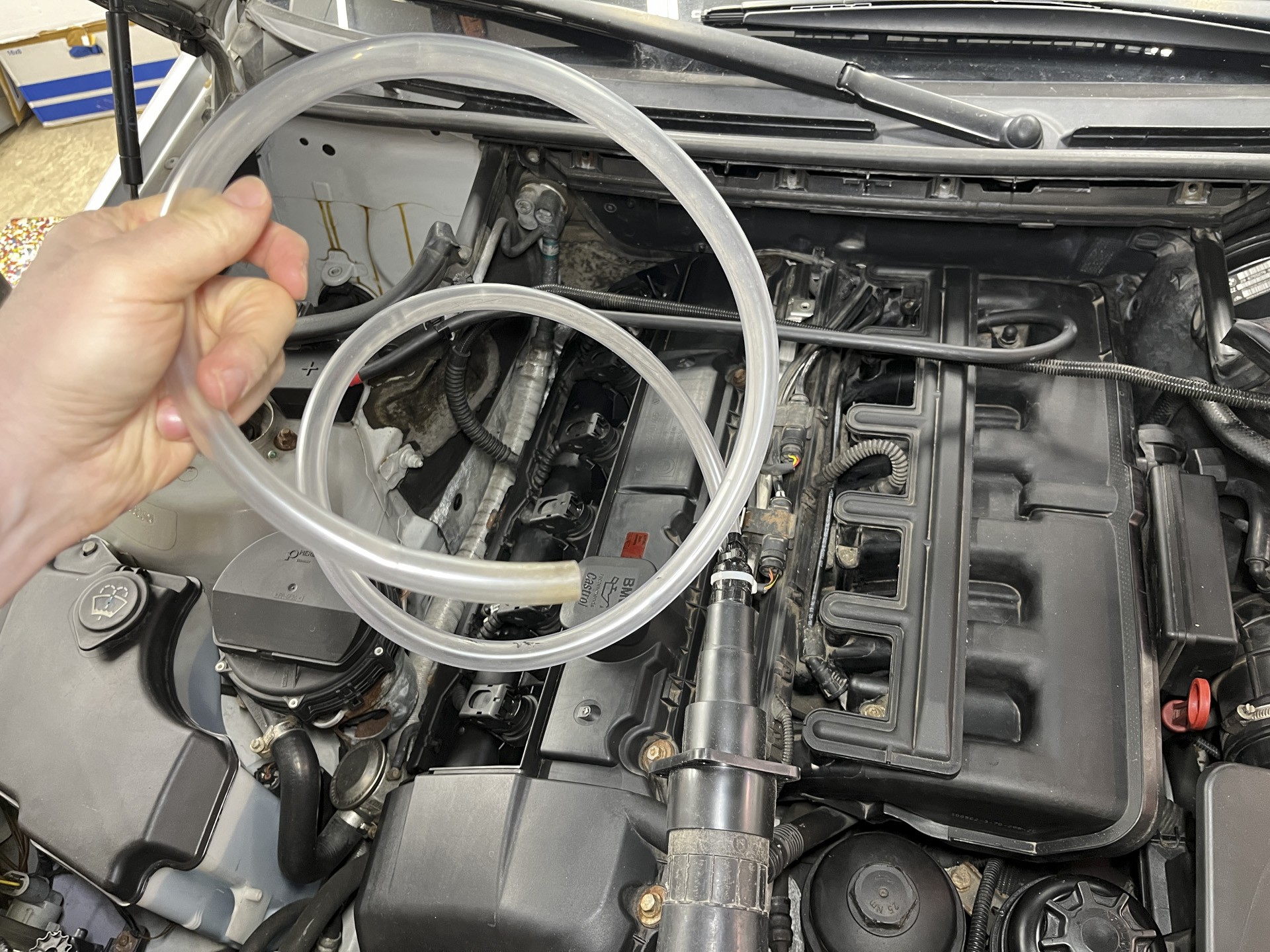Mice might seem like small, harmless creatures, but they can cause significant damage to your car. These rodents are notorious for gnawing on wires and hoses, leading to expensive repairs and frustrating breakdowns. Vehicles that are parked for extended periods, like classic cars or seasonal vehicles, are particularly vulnerable to becoming a cozy home—and a buffet—for these unwanted guests. If you’re dealing with the headache of mice in your car, you’re not alone. This guide provides proven methods and practical tips on How Do You Keep Mice Out Of A Car, ensuring your vehicle remains rodent-free and road-ready.
Understanding the Threat: Why Mice Love Cars
Before diving into solutions, it’s important to understand why mice are attracted to cars in the first place. Cars offer a perfect environment for rodents seeking shelter and sustenance:
- Warmth and Shelter: Especially during colder months, a car’s engine bay and interior provide a warm and protected space from the elements and predators.
- Food Sources (Unintentional): Crumbs, spilled food, and even pet food left in cars can attract mice.
- Nesting Materials: Car interiors offer plenty of soft materials like seat cushions, insulation, and paper that mice can use to build nests.
- Soy-Based Wiring: Many modern vehicles use soy-based wiring insulation, which, while environmentally friendly, unfortunately, is also palatable to rodents.
The damage mice inflict can range from minor annoyances to major mechanical failures:
- Chewed Wires: This is a common and dangerous problem. Mice can gnaw through essential wiring, disrupting electrical systems, causing malfunctions, and even posing a fire hazard.
- Damaged Hoses: Fuel lines, coolant hoses, and vacuum lines are all at risk. Damage can lead to leaks, engine overheating, and fuel delivery problems.
- Nests and Debris: Mice build nests in air vents, dashboards, and engine compartments, blocking airflow and causing unpleasant odors. Droppings and urine can also create health hazards and corrosion.
To effectively answer the question “how do you keep mice out of a car”, a multi-pronged approach is often necessary. Let’s explore some effective strategies.
My Mouse-Proofing Plan (Inspired by Experience)
Drawing from personal experience and proven methods, here’s a comprehensive plan to deter mice from your car:
Deep Cleaning is Crucial: Engine Bay and Interior
The first step in any rodent control strategy is to eliminate existing attractants and signs of mice. A thorough cleaning is essential:
- Interior Deep Clean: Vacuum the entire interior meticulously, paying close attention to crevices, under seats, and the glove compartment. Remove any food debris, wrappers, or potential nesting materials. Wipe down surfaces with a car interior cleaner.
- Engine Bay Clean: Mice often target the engine bay. Use a specialized engine degreaser and gentle brushes to clean dirt, grease, and any signs of rodent activity (droppings, nests). Be cautious when cleaning around sensitive electronic components.
Important Safety Note: Mouse droppings can carry harmful diseases like Hantavirus. Wear gloves and a mask during cleaning, and properly dispose of contaminated materials.
Peppermint Spray Repellent: A Natural Deterrent
Peppermint oil is a widely recognized natural mouse repellent. Mice dislike the strong scent of peppermint, making it a humane and effective deterrent.
- Application: Use a pre-made peppermint repellent spray specifically designed for cars, or create your own by diluting pure peppermint essential oil with water (follow product instructions or a 1:3 ratio of oil to water as a starting point).
- Target Areas: Spray liberally in the engine bay, around the perimeter of the engine compartment, wheel wells, undercarriage, and even on the tires. Be mindful of painted surfaces and test in an inconspicuous area first to ensure no adverse reactions. Reapply regularly, especially after rain.
Rodent Deterrent Tape: Chili Pepper Infusion
Rodent deterrent tape, often infused with chili pepper or other unpleasant substances, is a proactive measure to protect vulnerable wiring and hoses.
- Product: Honda, among other manufacturers, offers rodent-deterrent tape. These tapes are designed to be wrapped around wiring harnesses and lines.
- Mechanism: The chili pepper or other irritants in the tape are unappetizing to mice. If they attempt to chew on the taped components, the unpleasant taste discourages them.
- Application: Wrap critical wiring harnesses, fuel lines, and hoses, especially those made of soy-based materials, with the deterrent tape.
Copper Mesh Barrier: Physical Deterrent
Copper mesh acts as a physical barrier that mice are reluctant to cross or chew through.
- Material: Use copper mesh or wool, which is readily available online or at hardware stores.
- Placement: Stuff copper mesh into potential entry points such as air intakes, exhaust outlets (when the car is not running and cool), and any openings in the engine bay or undercarriage that mice could use to access the car.
- Intake Manifold Protection: Position copper mesh strategically around vulnerable areas like the intake manifold, securing it in place. Be cautious not to place copper mesh in areas where it could interfere with moving parts or electrical components.
Peppermint Spray on Wheels and Struts: Blocking Access Routes
Mice often climb tires and struts to access the car’s undercarriage and engine bay. Treating these areas with peppermint repellent can disrupt their entry route.
- Targeted Spraying: Generously spray peppermint repellent on tires, struts, control arms, and surrounding suspension components at all four corners of the vehicle. This creates a scent barrier that mice are likely to avoid.
Perimeter Repellent: Creating a “No-Go Zone”
Creating a repellent barrier around the parked car can further discourage mice from approaching it in the first place.
- Driveway Repellents: Use commercially available outdoor rodent repellents, often in granular or spray form, and apply them in a circle around the parked vehicle. Choose pet-safe and environmentally friendly options.
- Limitations: Perimeter repellents may need reapplication after rain or heavy watering as they can be washed away or diluted.
Other Mouse Deterrent Methods (and Why Some Don’t Work)
Beyond the core strategies, several other methods are often suggested for keeping mice out of cars. Here’s a look at some of these, with an assessment of their effectiveness:
- Mouse Traps: Snap traps or live traps baited with peanut butter can be effective in reducing mouse populations in garages or storage areas. However, they are less practical for direct in-car use and are a reactive, rather than preventative, measure for the car itself.
- Cats: Barn cats are natural predators and can significantly reduce rodent populations in and around storage areas. However, this isn’t a feasible solution for everyone, especially those with allergies or without outdoor space.
- Irish Spring Soap: The idea that Irish Spring soap repels mice is a common myth. There’s little scientific evidence to support this claim, and soap may even contain animal fats that could attract rodents.
- Dryer Sheets: Dryer sheets are sometimes suggested as a mouse repellent due to their strong scent. While they might offer a mild deterrent effect in enclosed spaces like car cabins, their effectiveness is questionable and not reliable for long-term protection.
- Ultrasonic Devices: Ultrasonic mouse repellents emit high-frequency sounds that are supposed to be unpleasant to rodents. However, studies and expert opinions generally conclude that these devices are not effective at deterring mice in real-world scenarios. Mice either habituate to the sounds or are simply not significantly bothered by them.
Why Some Cars are More Susceptible to Mice
An interesting factor in rodent car problems is that some makes and models seem to be targeted more than others. The reason often comes down to the materials used in vehicle construction.
- Soy-Based Components: As mentioned earlier, the increased use of soy-based wiring and other semi-organic materials in modern cars, particularly European and American makes, makes them more attractive to mice as a food source.
- Vehicle Design: Certain car designs may offer easier access points for mice or more appealing nesting locations within the engine bay or cabin.
If you’re concerned about rodent issues, researching whether your specific car make and model is known for mouse problems can be informative.
Conclusion: Proactive Mouse Prevention for Your Car
Effectively answering “how do you keep mice out of a car” requires a proactive and multi-faceted approach. Combining preventative measures like deep cleaning, natural repellents, physical barriers, and perimeter protection offers the best chance of keeping your vehicle rodent-free. Regular inspection and maintenance, especially for cars in storage or parked outdoors, are also crucial. By implementing these strategies, you can protect your car from costly rodent damage and enjoy peace of mind knowing your vehicle is safeguarded from these unwanted guests.
Do you have your own proven methods for keeping mice out of cars? Share your tips and experiences in the comments below!
Get The Job Done With Proven Gear
Our team’s hard at work, testing tools, parts, and shop equipment. Let our trials and experience be your guide to mastering The Garage.
SEE GIFT GUIDES

